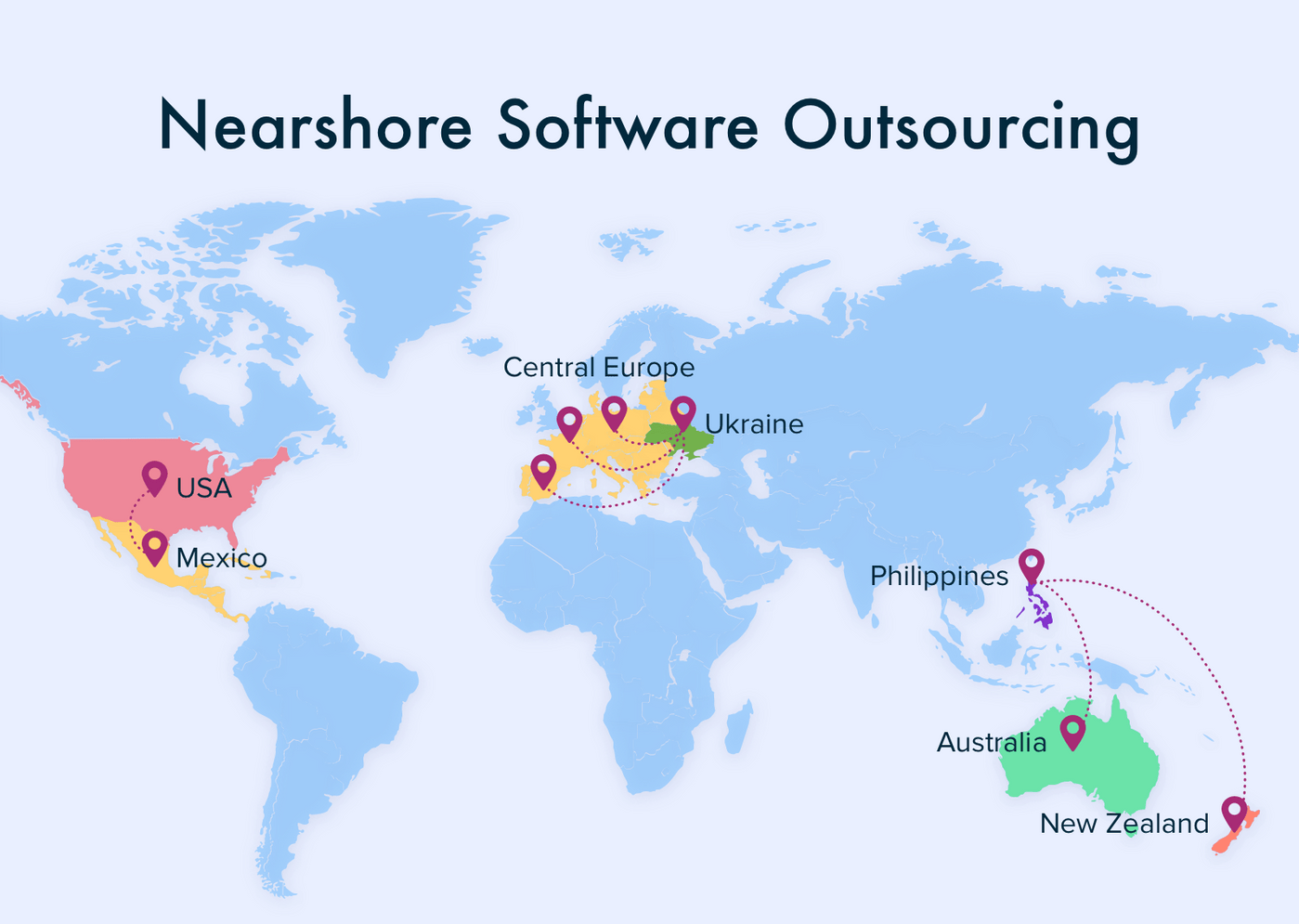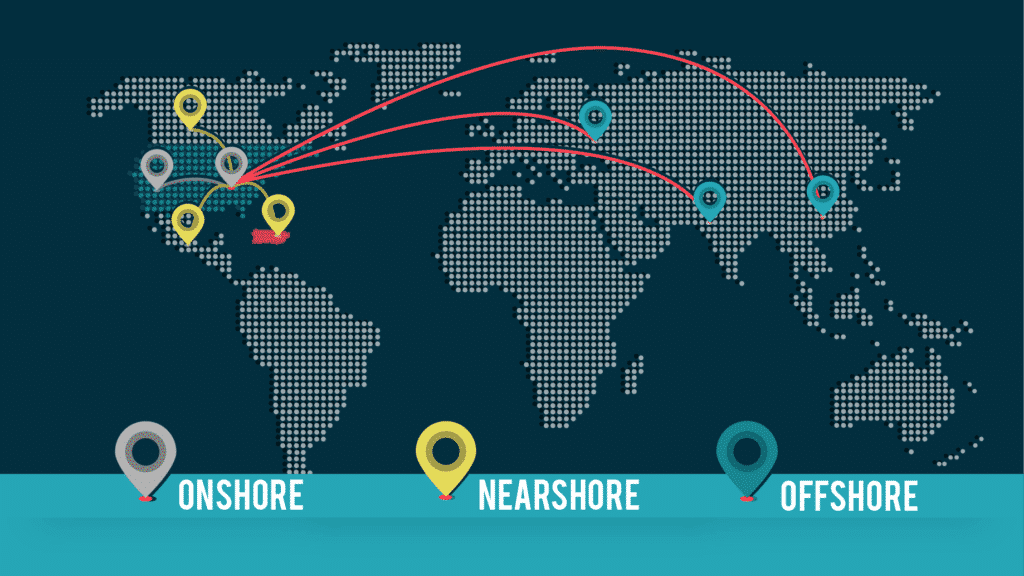Nearshore software development outsourcing opens doors to cost-effective collaboration and enhanced project outcomes. Dive into the world of nearshore outsourcing with this engaging overview.
In this guide, we will explore the benefits, best practices, and real-world examples of nearshore software development outsourcing to help you navigate this effective business strategy.
Introduction to Nearshore Software Development Outsourcing

Nearshore software development outsourcing refers to the practice of hiring a third-party company located in a nearby country or region to develop software applications or provide IT services. This model offers several advantages over traditional offshore outsourcing, including better communication, cultural alignment, and time zone compatibility.
Benefits of Nearshore Outsourcing
- Proximity and Time Zone Compatibility: Nearshore partners are located in similar time zones, facilitating real-time communication and collaboration.
- Cultural Alignment: Nearshore teams often share similar cultural traits, making it easier to understand business practices and work dynamics.
- Cost-Effectiveness: While nearshore outsourcing may be slightly more expensive than offshore options, the overall cost is often lower than onshore alternatives due to reduced travel expenses and operational costs.
Key Factors to Consider when Selecting a Nearshore Outsourcing Partner
- Technical Expertise: Ensure the partner has the necessary skills and experience to handle your project requirements.
- Communication: Look for a partner with strong communication skills and proficiency in your preferred language.
- Cultural Fit: Consider the cultural alignment between your company and the outsourcing partner to ensure smooth collaboration.
- Security Measures: Verify that the partner has robust data protection protocols in place to safeguard your sensitive information.
Advantages of Nearshore Software Development Outsourcing

Nearshore software development outsourcing offers various advantages that can positively impact project outcomes. Let’s explore some of the key benefits below:
Cost Advantages
Outsourcing software development to nearshore locations can provide cost savings compared to onshore options. Countries in close proximity often offer competitive rates while maintaining high-quality services. This cost-effectiveness allows companies to allocate resources more efficiently and invest in other areas of their business.
Timezone Advantages, Nearshore software development outsourcing
One of the significant advantages of nearshore outsourcing is the timezone alignment with the client’s location. This allows for better collaboration and communication between teams, as there is minimal time difference to navigate. Real-time interactions and quick responses can lead to faster project delivery and increased productivity.
Cultural Alignment
Cultural alignment plays a crucial role in the success of outsourcing projects. Nearshore locations often share similar cultural values, work ethics, and communication styles with the client’s country. This alignment can help in building strong relationships, fostering trust, and ensuring smooth project execution. It also reduces the chances of miscommunication or misunderstandings, leading to improved project outcomes.
Best Practices for Managing Nearshore Software Development Teams
Effective management of nearshore software development teams requires careful planning and communication strategies. By implementing best practices, you can ensure seamless collaboration and successful project outcomes.
Strategies for Effective Communication
Clear and efficient communication is essential when working with nearshore teams. Here are some strategies to enhance communication:
- Establish regular meetings: Schedule weekly or bi-weekly meetings to discuss project progress, challenges, and goals.
- Utilize collaboration tools: Implement tools like Slack, Microsoft Teams, or Jira to facilitate real-time communication and project tracking.
- Define communication protocols: Establish clear guidelines for communication channels, response times, and escalation procedures.
- Promote cultural awareness: Understand and respect cultural differences to avoid misunderstandings and promote a harmonious working environment.
Tools and Technologies for Seamless Collaboration
Utilizing the right tools and technologies can significantly improve collaboration with nearshore teams. Here are some recommended tools:
- Version control systems: Use Git or SVN for efficient code management and collaboration.
- Virtual meeting platforms: Leverage tools like Zoom or Google Meet for face-to-face interactions and virtual collaboration.
- Project management software: Employ platforms like Trello, Asana, or Basecamp to streamline project workflows and task assignments.
- Screen sharing applications: Use tools such as TeamViewer or AnyDesk for remote troubleshooting and code reviews.
Overcoming Language Barriers and Ensuring Clarity
Language barriers can pose challenges in communication with nearshore teams. Here are some tips to overcome language barriers and ensure clarity:
- Provide detailed documentation: Supplement verbal communication with written documentation to clarify requirements and expectations.
- Encourage language training: Offer language classes or resources to improve communication skills within the team.
- Use visual aids: Incorporate diagrams, charts, and visuals to enhance understanding and convey complex ideas more effectively.
- Seek feedback: Encourage team members to ask questions and provide feedback to ensure mutual understanding.
Case Studies and Examples
Exploring successful nearshore software development outsourcing projects can provide valuable insights into the benefits and challenges of such partnerships. Let’s delve into specific case studies to understand how nearshore outsourcing has contributed to achieving project goals.
Case Study 1: Company A
- Company A, a tech startup based in the US, decided to outsource their software development needs to a nearshore team in Mexico.
- Challenges Faced:
- Tight deadlines and changing project requirements posed a challenge for the team.
- Communication barriers due to different time zones and languages.
- Solutions Implemented:
- Regular video conferences and daily stand-up meetings to ensure clear communication.
- Implementing agile methodologies to adapt to changing requirements efficiently.
- Results:
- The nearshore team in Mexico was able to deliver high-quality software within the deadlines.
- Cost savings of 30% compared to hiring an in-house team in the US.
Case Study 2: Company B
- Company B, a multinational corporation, opted for nearshore software development outsourcing to a team in Canada.
- Challenges Faced:
- Integration of the nearshore team with the in-house team located in Europe.
- Differences in work culture and processes.
- Solutions Implemented:
- Organizing team-building activities and training sessions to foster collaboration.
- Establishing clear communication channels and project management tools for seamless coordination.
- Results:
- Improved efficiency and productivity with the combined efforts of the nearshore and in-house teams.
- Successful delivery of a complex software project ahead of schedule.
Wrap-Up

Explore the endless possibilities of nearshore software development outsourcing and unlock the potential for successful partnerships and project achievements. Take your business to new heights with the power of nearshore outsourcing.
FAQs
What is nearshore software development outsourcing?
Nearshore software development outsourcing involves contracting software development services to a company in a nearby country for cost-effective collaboration.
How does nearshore outsourcing differ from offshore outsourcing?
Nearshore outsourcing offers advantages like closer time zones, cultural alignment, and easier communication compared to offshore outsourcing.
What are the key factors to consider when selecting a nearshore outsourcing partner?
Key factors include language proficiency, cultural fit, technical expertise, and past project success rates.
How can language barriers be overcome when working with nearshore teams?
Utilize translation tools, conduct language training sessions, and encourage open communication to overcome language barriers effectively.
